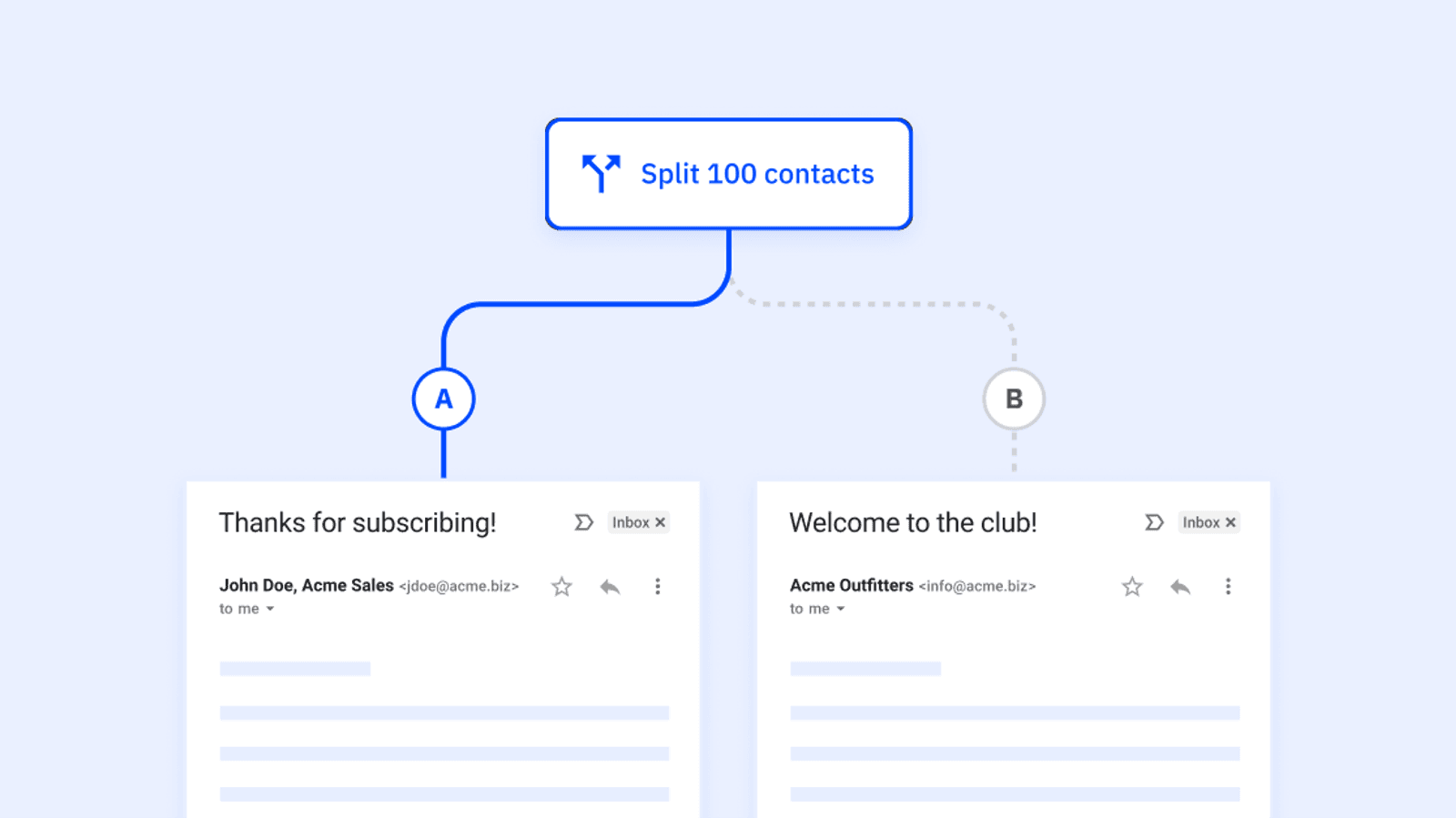Do you know how to become a successful blogger?
If you’re reading this, the answer is probably closer to a “no,” but that’s about to change.
Have you ever heard the phrase, “everyone can sing, but not everyone can sing well?”This is true of blogging too. These days, anyone can do it – but without the proper preparation or execution, not everyone does it well. And the people who don’t do it well probably didn’t think through everything required to create and maintain a successful blog.Luckily, you won’t be someone who’s bad at it, because you’re reading this post on how to make a successful blog.
And we’ve got what you need.
The hardest part of becoming a successful professional blogger? Starting.By the time you reach the end of this post, you’ll be armed and know the best way to blog. You’ll learn:- 7 steps to become the successful blogger you’ve always dreamed of being
- Advice from blogging veterans to get you pumped
“How do I become a successful blogger?” We know how…
- Technological. Lots of information about the mechanics of setting up a blog involve your domain name, your hosting platform, and more.
- Emotional. Here’s where you’ll find information that pokes deeper at why you’re trying to blog at all, finding inspiration, being creative, and focusing on growth.

Equal part tech and emotion required.
When you get a blog off the ground, you can’t have one without the other. To blog, you need to have that tech side covered – but without the emotion and creativity and motivation, you’ll have nothing to actually use a hosting platform for.
Which is why in these next 7 steps, both sides are represented to give you the most complete picture of how to have a successful blog:- Define why you’re writing a blog
- Know your audience (and really do your research)
- How to choose a blogging platform
- Come up with blog ideas
- Create your content
- Publish and promote your blog
- Get the other tools you need
Step 1: Define why you’re writing a blog
- What do you want to say?
- Who do you think you can help?
- What do you feel like you have a unique take on?
- Inspire and teach others
- Share an interest
- Connect with more people
- Create your own job
- Make some money
- Become more intentional about life
- Become a better thinker
- Become a better writer
“Other people have already written about this. Why would anyone read my content?”
Yeah, it's true. People write about the same stuff over and over and over again. There’s no denying it, and there’s no stopping it.
A lot of the same pineapples content out there already
Step 2: Know your audience (and really do your research)
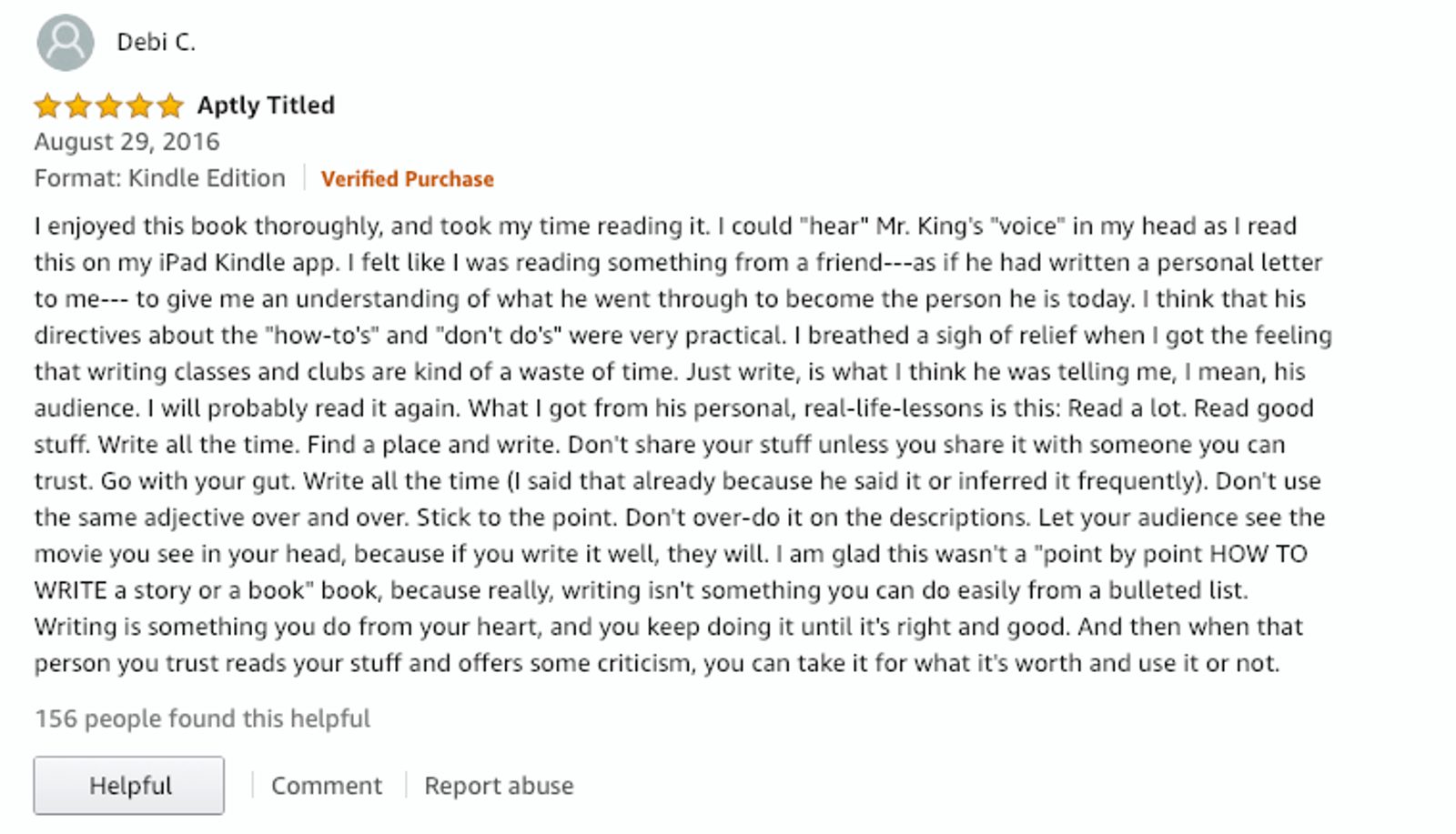
This is a GOLD MINE of blog ideas (Source: Amazon)
Read this review (one review!) and you have all the blog post ideas you need:- “I could ‘hear’ Mr. King’s ‘voice’ in my head” becomes a post like How to Get Your Readers to Hear Your Voice in Their Heads
- “I breathed a sigh of relief when I got the feeling that writing classes and clubs are kind of a waste of time” becomes a post like Are Writing Classes a Waste of Time?
- “Don’t share your stuff unless you share it with someone you can trust” becomes a post like What If I’m Afraid to Show Other People My Writing?
- How Much Description is Too Much?
- Where Are the Best Places to Write?
- “Adjective Repetition” Might Be Killing Your Writing
- Comments on blogs about similar topics
- Surveys (you can start by polling your friends and social media connections, then later use your email list)
- Actual conversations with your readers
The best copywriters in the world use review mining (here are the results)
Joanna Wiebe of CopyHackers coined the phrase review mining,” so it’s no surprise that she’s a good example of its results.When she needed to find the right messaging for an addiction rehab facility, she turned to Amazon for help. She read over 500 book reviews, and organized her audience’s language in this chart.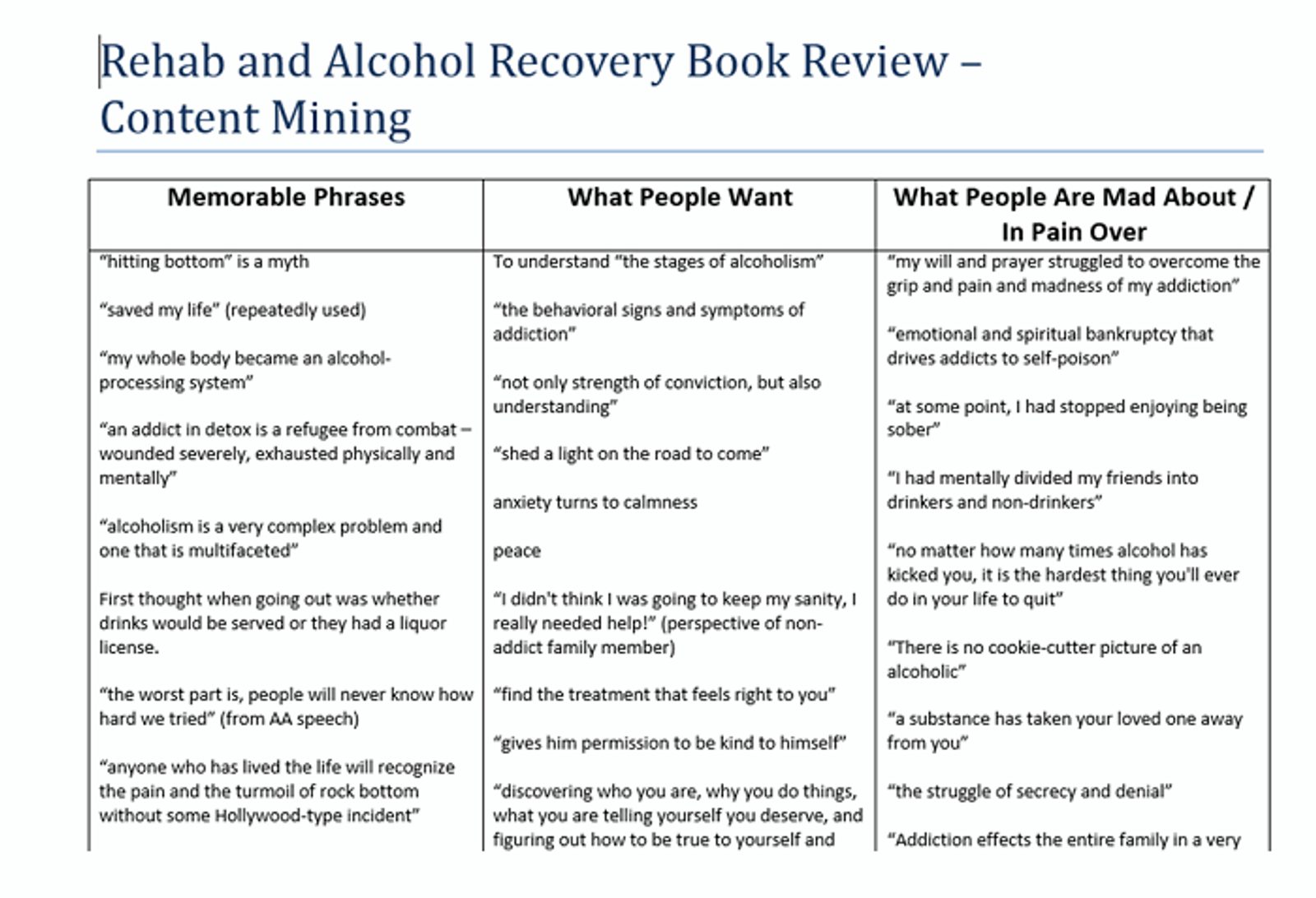
How Joanna organizes her review mining (Source: CopyHackers)
And eventually, one of those customer quotes became the website’s new headline.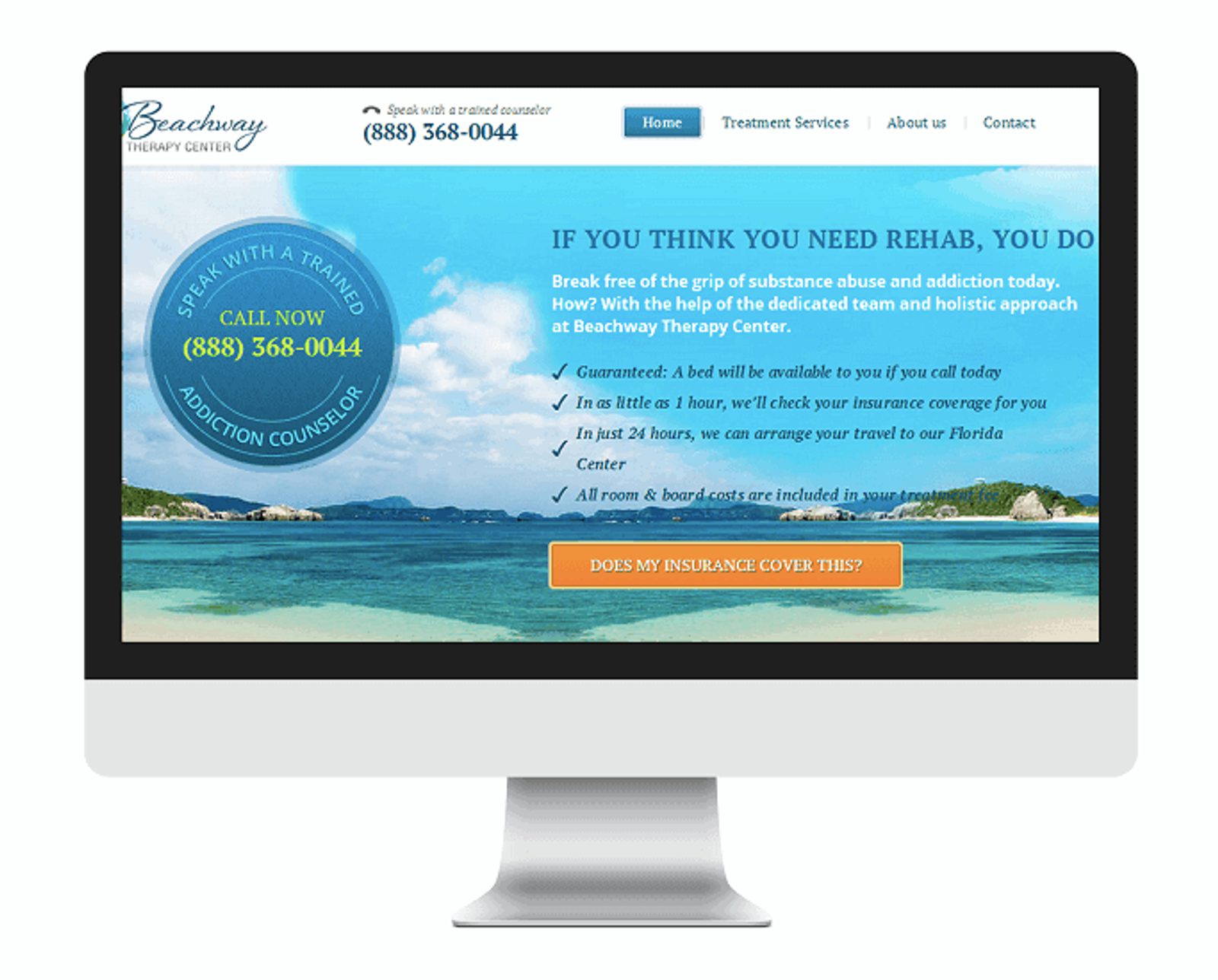
Hits pretty hard, huh? (Source: CopyHackers)
The new headline increased button clicks by 400%.That’s the power of knowing your audience.To know your audience, you have to go deep. They’ve already given you everything you need to know, you just have to find it.Step 3: How to choose a blogging platform

WordPress
First things first, there are a couple of different WordPress options – Wordpress.com and WordPress.org.Here are the key differentiators between WordPress.com and WordPress.org:- WordPress.org is customizable, WordPress.com is too, but less so.
- WordPress.org is self-hosted, WordPress.com is not (which means paying extra for outside hosting).
- You get a full domain on WordPress.org but only a sub-domain on WordPress.com
- You own the content on WordPress.org but not on WordPress.com
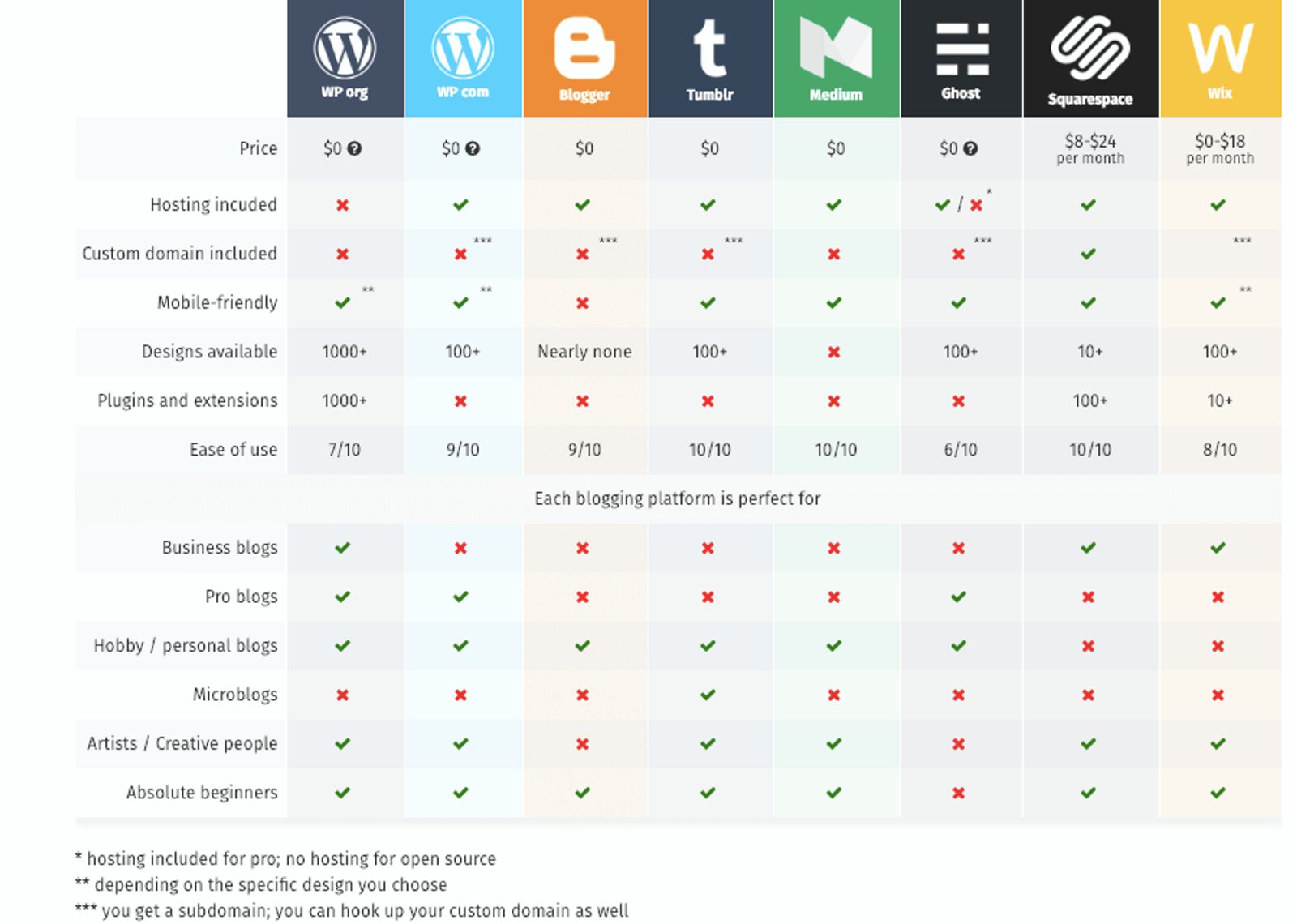
(Source: Start Blogging Online)
Everything else
From personal experience, I can recommend Squarespace for:- Easy set-up
- Good, customizable design templates
- Helpful analytics
- A reasonable price
- Your own domain name
- A clean, safe and intuitive blog platform that can be hosted separately to a site, but via the same domain
- It’s a free service
- It’s fully customizable (with proper coding)
Step 4: Come up with blog ideas
Did you know that 47% of customers will view 3-5 pieces of content before engaging on a sales path?That means you’re going to need a lot of content throughout your product funnel. Content marketing is not limited to top-of-funnel awareness content.So what types of blog posts can you do? If you were just thinking about paragraphs upon paragraphs, the answers may surprise you.Here are 5 popular types of blog ideas to write:- Long-form or short-form post (refer to quote above)
- Customer story or a case study posts
- Infographic posts
- Checklist or listicle posts
- How-to posts
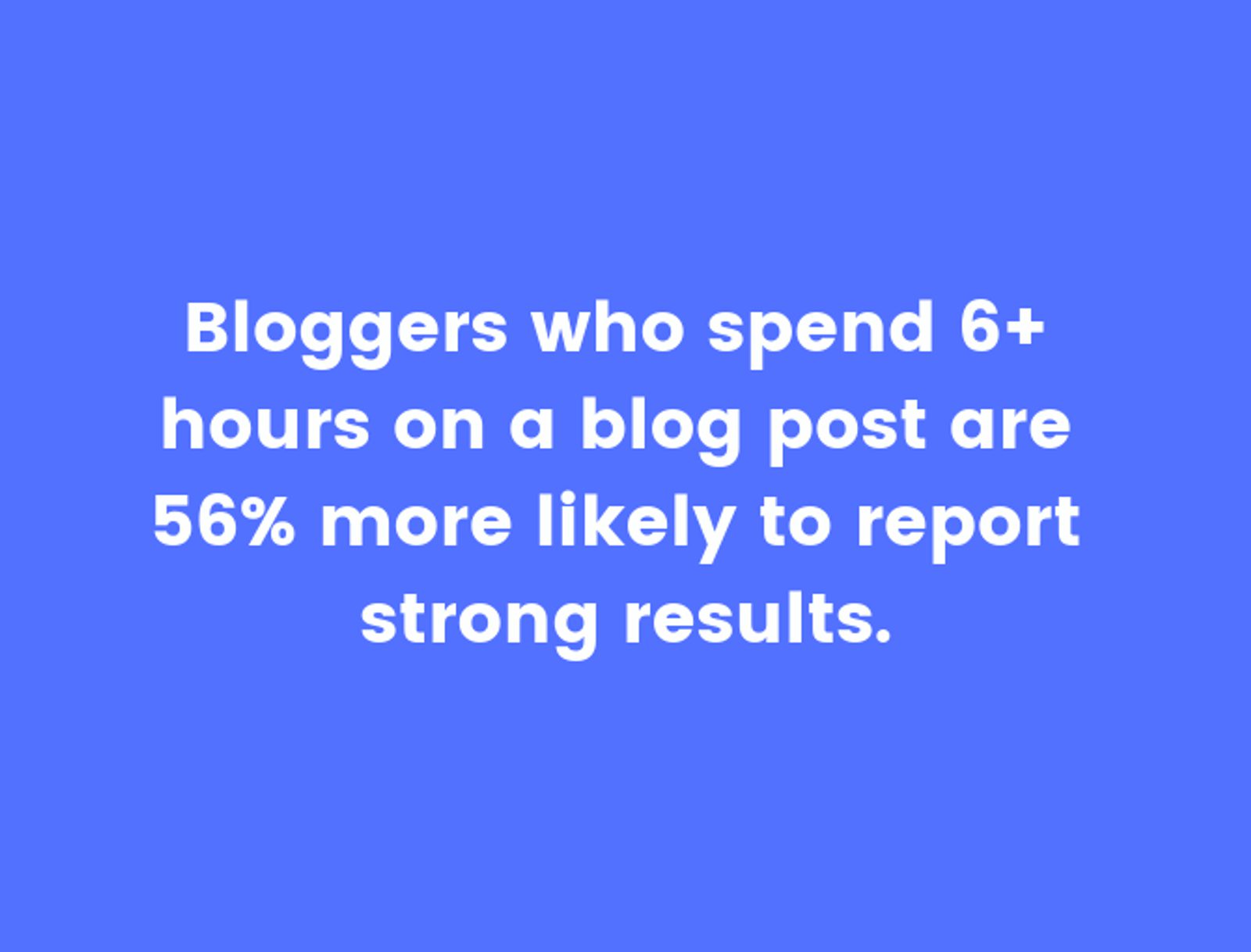
Screen Recording 2019-01-30 at 02.48 PM.movHey, that’s us!
Long-form: it’s a thing and it works.Short-form blogs do have their place and time as well (and often we at ActiveCampaign will use it for another type of blog post).For example, Jimmy Daly of Animalz (referenced earlier) writes about content marketing. this post of his is just 695 words, but it makes one point expertly (and is backed by his experience).For more on this, check out 10 Types Of Content That Actually Work (Without Wasting Your Time).If you’re looking for more blogging inspiration, here are 5 more blog suggestions for you:- Curation of the best content posts (because you know the best, and you’ve got it all in one place)
- Expert profile posts (because there’s nothing like a little expert reinforcement for your brand)
- Guest blog posts (because influencers are your content’s best friends)
- Industry news update posts (to show how you keep up with the happenings in your industry)
- Holiday posts (to capitalize on those trending e-commerce times)
Step 5: Create your content

It’s science.
Headline
According to Copyblogger 8 out of 10 people will read headline copy, but only 2 out of 10 will read the rest. So, what's the best way to blog if you want people to be curious enough to read the rest? Your headline needs to kill.And it can take time.Advertising legend David Ogilvy rewrote this famous headline for an automobile advertisement 104 times.“At 60 miles an hour, the only thing you need to hear in the new Rolls Royce is the ticking of the dashboard clock…”
It’s hard and tedious. But if he could do it, you can do it.The brave copywriter Justin Blackman of Pretty Fly Copy once took on the ultimate headline challenge – writing 100,211 headlines in 100 days.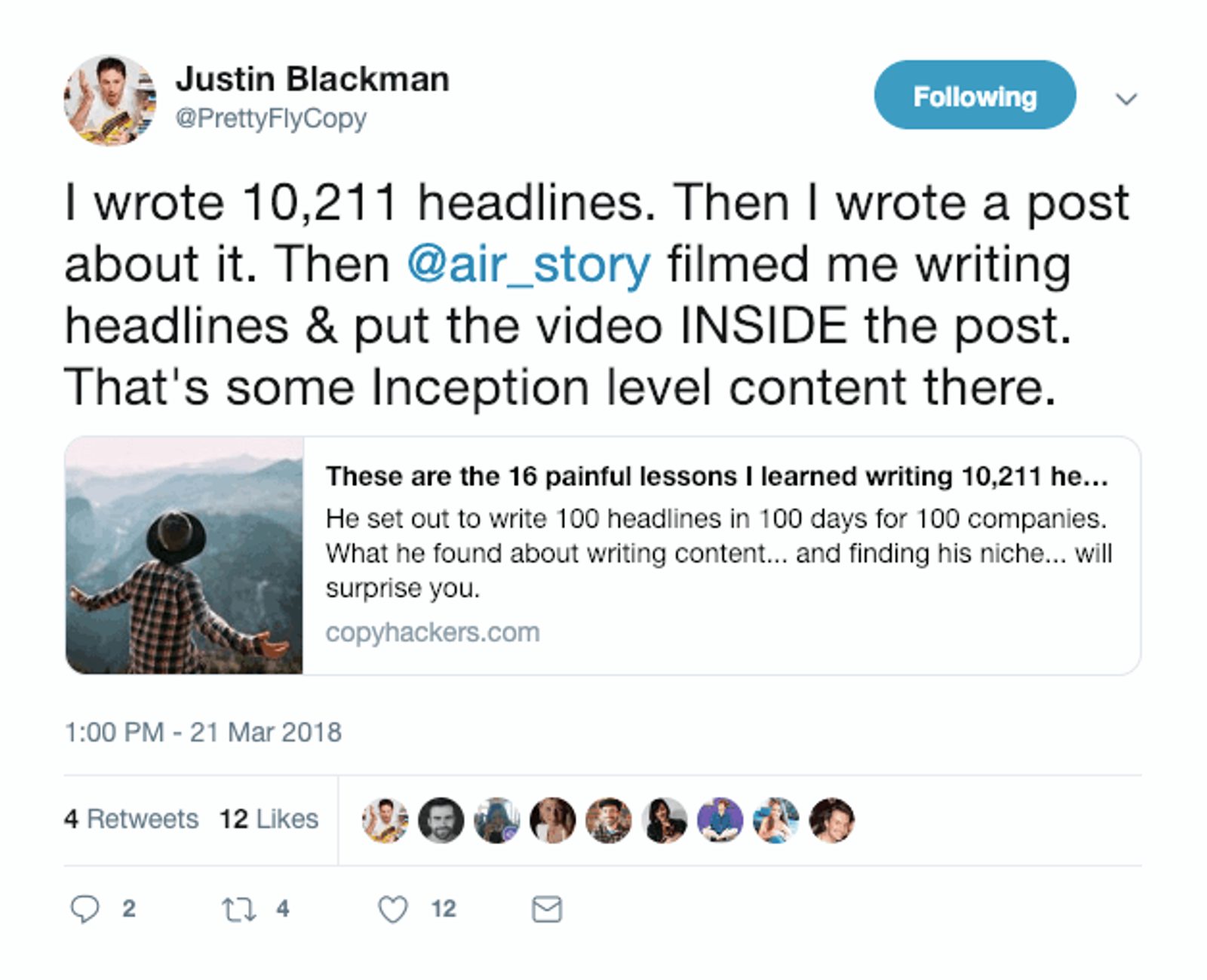
The featured and body images
“My team and I at Venngage were interested in seeing how we could improve certain metrics like Time on Page and Bounce Rate. So we decided to conduct some surveys with users who had engaged with our blog...
...We used this research to help re-evaluate our blog strategy which I cover in this post about our content framework. Key takeaway from the calls: less big chunks of text go a long way.“ – Nadya Khoja, Chief Growth Officer, Venngage
A good blog post will have a featured image. A great blog post will have that plus images throughout.Did you know that captions under images are read, on average, 300% more than the body copy itself (according to David Ogilvy’s Ogilvy On Advertising)? The image draws the eye to the copy.When you think about your featured image, consider what makes images compelling and shareable in a crowded news feed.According to Buffer, key factors include:- Emotion
- Simplicity
- Relevance
- Color
Intro
A long walk for a short drink of water. That’s what a lot of intros are.It can be really easy to overdo an intro. Too much backstory and context can take away from the point of the blog, but often writers instinctively want to add it.But an intro is just that: an introduction to the topic of the post. It needs to be compelling and informative, but it does not need to be a novel.What it needs to do instead is invite the reader in, which can easily be done in a few lines or short paragraphs.To make an intro worth reading, you can try these ways to write an irresistible intro:- Ask them an inviting question
- Share a commonality
- Lead with a personal story
- State facts
The meta description
The meta description is that little bit of text you see under the title link in search results. It’s basically the sneak-peek at what the content is going to be, and it helps search engines decide exactly what your post is about so they can categorize it.This meta description tells you exactly what you’re in for when you click the link:
What it is and how to do it. Boom.
The best thing you can do for a meta description is to focus on clarity. The post title is the place to get creative and come up with something that stands out, but the meta description should highlight your keyword.Plugins like Yoast are great tools to help you add meta descriptions to your blogs, and they are easily added to WordPress.
(Source: Yoast)
Subheads
Subheads, headlines, and body content are all much more effective if they do one thing.That’s right – one simple thing will make a person keep reading.And that last sentence was it.Building curiosity.You were wondering what that one simple thing is, and then you kept reading. Boom.
Curious. Very curious.
Inducing curiosity is so effective at encouraging continued reading that people don’t always realize we’re doing it on purpose. Headlines and subheads that create curiosity are often questions that readers already have, or surprise them somehow.The behavioral economist George Loewenstein wrote about the 5 ways to create curiosity:- Ask a curiosity-inducing or burning question
- Tell the beginning of a story and leave it initially unfinished
- Do something unexpected or violate expectations
- I have information you don’t
- Making them think they’ve forgotten something they already know
- Why You Should Get Your Teeth Fixed
- How To Get a Great-Looking Smile
- Have You Ever Wondered What You Would Look Like With A "Million Dollar Smile"?
- Knows you’ve wondered about this
- Has the answer to the question
Data
Did you notice in earlier sections that I had statistics and examples, like bloggers who spend 6+ hours on an article are 56% more likely to report strong results?Why do you think I did that?To inform you, absolutely. But also to reassure you.Data is convincing. It changes the conversation from “take my word for it” to “look at what these smart numbers say.”Here’s why you should include data to create the best blog posts:- Authority
- Trustworthiness
- Justification
- Reader value
Content
This is kind of an obvious part of your blog posts anatomy, but we’d never leave it out. How to create the best blog?With the content. Duh. This is the main part of your blog. This is where all of the data and clever copy lives and works together to keep readers engaged and solve problems.The biggest things to note about body content are:- Use the same words your readers use. Now that you know your audience, talk to them like a human and be relatable.
- Make it easy to scan. Break the left margin with images and bullet lists and don’t use humongous blocks of text.
Call-to-Action
Wait, DON’T GO!Phew, glad I caught you.The last thing you want is for someone to read your blog and then just leave.Which means you’ve got to call your customers to action. Literally. With a call-to-action.In each of our ActiveCampaign blog posts, we have opt-in call-to-action boxes throughout the article.Not only do they appear often enough to give them a better chance to be noticed, but their copy is tailored to the blog theme (like this one from a blog about the 5 best tools for email capture).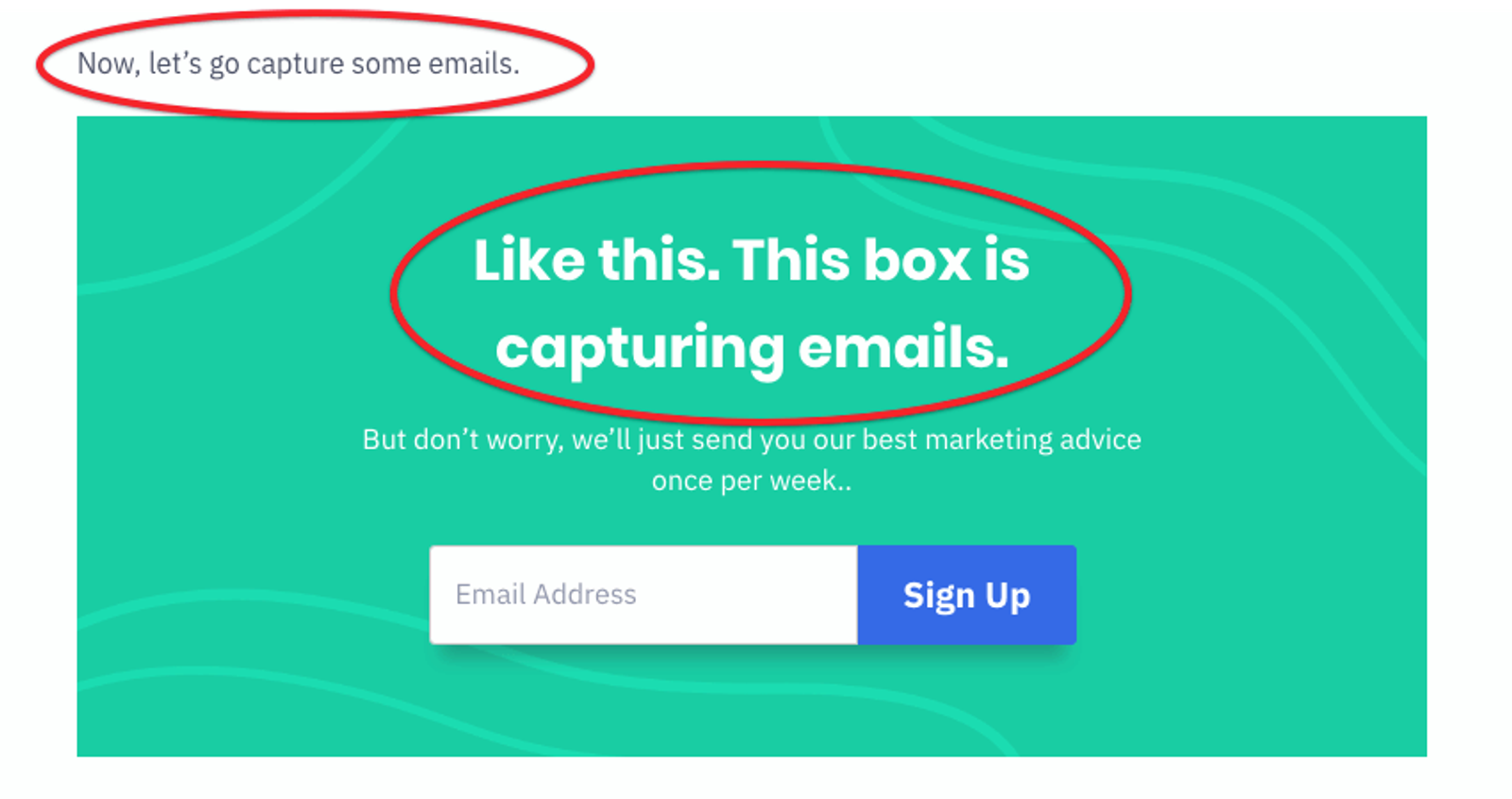
An example within an example. Inception marketing.
A call-to-action can be for anything:- Newsletter subscriptions
- Free-trial sign-ups
- Lead magnet downloads, you don’t want them to be left unused.
- Grammarly: Corrects grammar, spelling, and clarity errors in real time, and is available as a separate application and a Google plugin.
- Hemingway Editor: Highlights sections of your content to note things like long sentences, readability, and small mistakes like extra spaces.
- Capitalize My Title: Checks titles for proper capitalization and clarity.
Step 6: Publish and promote your blog
While more bloggers reported publishing on a daily basis in 2015 compared to 2014, the majority of bloggers (66%) are still publishing less often than daily, but more often than monthly. (Content Marketing Institute)
The curtain is up, it’s time to go live!But don’t worry, you can publish on your own schedule.One quick word of advice about that – don’t become a slave to a schedule. Consistency is important, but not as important as creating quality content that’s actually worth sharing on your blog.As Jimmy Daly says (quoting former Wells Fargo CEO Carl Reichardt), “tenacity, not brilliance.”Content marketing isn’t easy. Occasionally, a brilliant new content strategy helps a company make it big. But far more often, good strategies are never executed on. A little tenacity goes a long way.So, publishing is done. Now, how do you promote your blog?For the best, scalable blog promotion, target these two channels: email and organic search.SEO is the most scalable distribution channel, and organic search is one of the biggest sources of referral traffic. It’s also a helpful way to build your blog's email list (aka the other way you should be promoting your content).Optimizing your blog for organic keyword ranking will make it easier to find. The more people that find it, the more sign-ups you’ll see.And about that email list…
Building an email list is a no brainer. And once people are able to find your blog through search, you should have a way to easily get them subscribed.The best and easiest way to do that through your blog is to have opt-in sign-up forms. With the right sign-up form design and opt-in copy, they are the perfect simple, subtle method of email list building.But if you’re a new blogger, you’re probably still trying to find your first readers, who may not yet know how to find you organically or be able to come through a sign-up form on your blog.So where do you find readers for your blog?Once you know your target audience, finding places to promote your content is as simple as learning where they hang out. And you can do that in two ways:- Finding communities via Google and social media
- Asking your customers
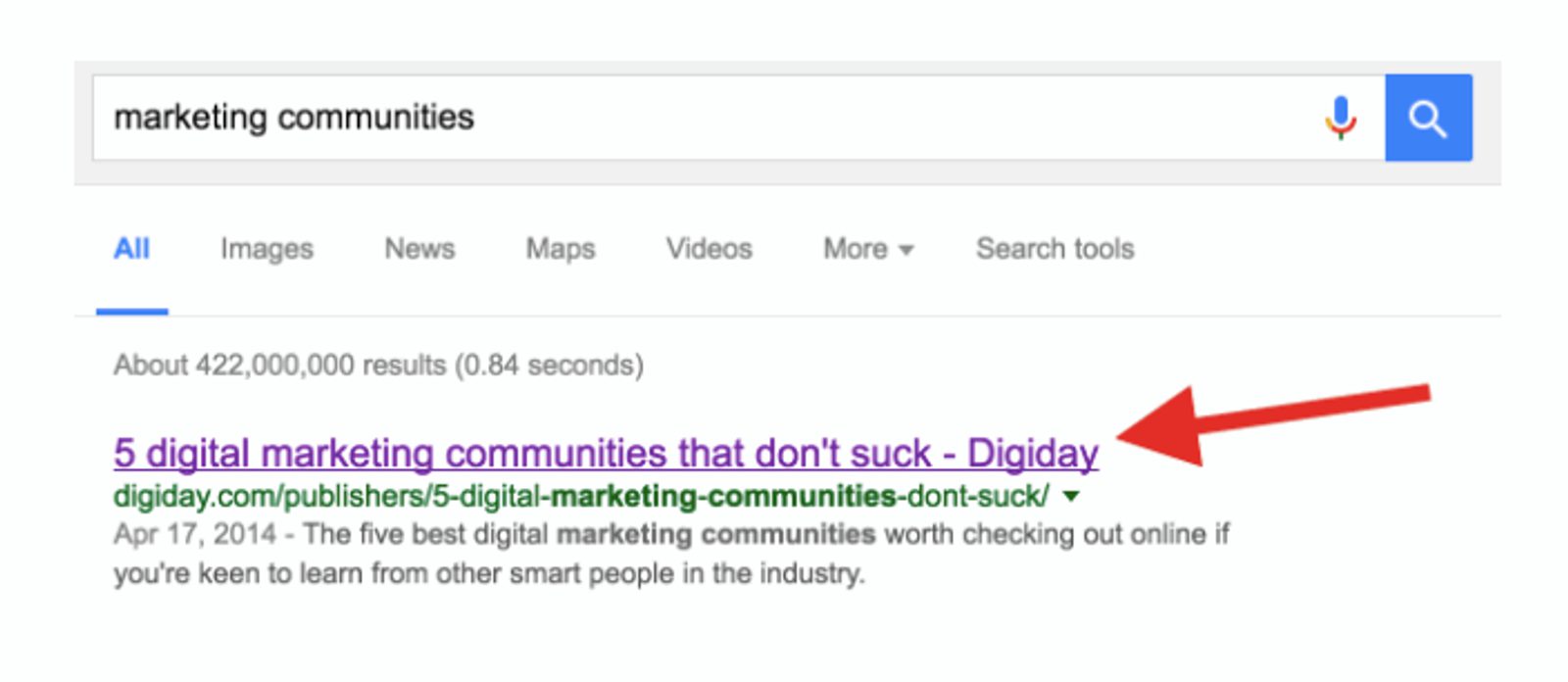
(Source: Grow and Convert)
Or you can go to Facebook groups, LinkedIn groups, and community sites like Quora to literally ask the community of people there, like this:
(Source: Grow and Convert)
But it’s not easy trying to go up to strangers and ask for their opinions and advice. So you can always ask your customers (don’t worry, they won’t bite).If you have a main email list built, try asking for their content feedback via a welcome email or sending them to an online survey.What else is there?
How do you promote your blog? Email and search are great ways, but you might be wondering what else is out there.Influencers.If you want to know for sure that someone is sharing your blog (instead of spewing out tweets that no one reads), reach out to influencers.
We regularly reach out to people like Oli Gardner of Unbounce to get quotes or talk about sharing content.
Outreach for blog posts (like getting quotes from people) can be very important for blogs. Find people in your industry that you can reach out to, start building relationships, and you might have a few extra friends ready to give your blog a little boost.Step 7: Get the other tools you need

Conclusion: Top 4 pieces of advice from other successful bloggers






